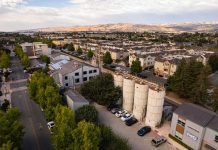There are plenty of draconian cuts in the state budget Gov.
Jerry Brown signed last month, items that promise to affect
hundreds of thousands of Californians.
There are plenty of draconian cuts in the state budget Gov. Jerry Brown signed last month, items that promise to affect hundreds of thousands of Californians.
The slashes will shutter libraries, shorten school years, close state parks, send some prison inmates to county jails and may limit the neediest and sickest Medi-Cal patients to 10 doctor visits per year, just less than one per month.
But the one cut that promises to provide the largest bang for Brown’s buck – doing the most damage with the least savings – is elimination of state subsidies for the 46-year-old Williamson Act, otherwise known as the state Land Conservation Act.
This law gives farmers reduced property taxes in exchange for signing contracts promising to keep their land in agriculture for 20 years. The contracts “roll over,” so that any farmer taking the benefit this year must promise not to develop his or her land for two decades. And the same for all who take the benefit next year.
At its peak, the Williamson Act was costing the state less than $30 million, while keeping bulldozers off 16.5 million acres of open space. The law passed in the 1960s, long before anyone knew of climate change or greenhouse gases, but it has been the most effective anti-climate change measure anywhere in the world.
That hasn’t spared this law from the chopping block in the recent past, when ex-Gov. Arnold Schwarzenegger targeted it year after year in his proposed budgets. Schwarzenegger had an excuse, at first.
He honestly didn’t know that a 2003 study by Purdue University agronomists found that each acre of farmland in that university’s state of Indiana pulls about 0.107 tons of carbon dioxide from the air every year. That’s for all types of agricultural land, including pastures, vineyards, cornfields, orchards and more.
Yes, farming also produces some greenhouse gases, among which CO2 is the leading villain in climate change – and climate change does continue despite unusually snowy winters in some places.
One theory for why this happens is that the ever-quickening melting of glaciers near the poles puts more moisture into the atmosphere, and it can emerge elsewhere as snow.
But even taking account of pollution from farming, the Purdue figures mean California land protected by the Williamson Act absorbs a minimum of 1.754 million tons of carbon yearly. That’s equivalent to the weight of 18 cruise ships the size of the 3,600-passenger Emerald Princess, one of the largest current luxury liners.
After Schwarzenegger heard of these findings in a 2007 press conference, he allowed restoration of Williamson Act funding in the final version of that year’s budget and the next two. But it disappeared last summer, with $10 million worth of funding somehow reappearing in the fall along with a provision allowing some farmers to sign contracts with 10-year terms.
At the same time, some counties took on the entire funding burden of the pacts, while others refused – which means that the clock is ticking right now on hundreds of thousands of open acres that now figure to become ex-urban sprawl in little more than a decade. A bill allowing the local options to continue passed the Legislature this month.
But now even last autumn’s partial restoration of state funding is gone, which will eventually lead to development of millions of farm acres because most farmers cannot afford to pay taxes based on the market value of their developable land.
It’s possible Brown wasn’t aware of the Purdue study or a similar 2009 one that backed the earlier findings. No doubt he sought every nickel or dime of relatively harmless cuts he could find. Nickels and dimes are what $10 million amounts to in the multi-billion dollar universe of state government.
Brown warned early on his budget would bring extreme pain, but also said he would lead the state to quit fobbing problems off onto future generations.
Yet, that’s precisely what ending state money for the Williamson Act does. It will be more than 10 years before the act’s disappearance (likely if some money doesn’t somehow reappear) is widely felt.
It will be 20 before much significant development occurs on land that’s now protected.
But if geologists and other climate change scientists are correct, that’s about when the kinds of weird weather California has seen this winter (record lows followed just days later by record high temperatures for their respective dates) will become dangerously extreme.
It’s also just when the current generation of kids aged 10 or younger will be taking on more and more responsibility for their world.
The bottom line: Not one of this year’s budget cuts promises to do more long-term harm per dollar saved than chopping the Williamson Act.
It’s not too late for Brown and the Legislature to reverse this poor choice, and if they’re wise, they’ll do just that.
Email Thomas Elias at td*****@*ol.com. His book, “The Burzynski Breakthrough: The Most Promising Cancer Treatment and the Government’s Campaign to Squelch It,” is now available in a soft cover fourth edition. For more Elias columns, visit www.californiafocus.net.







